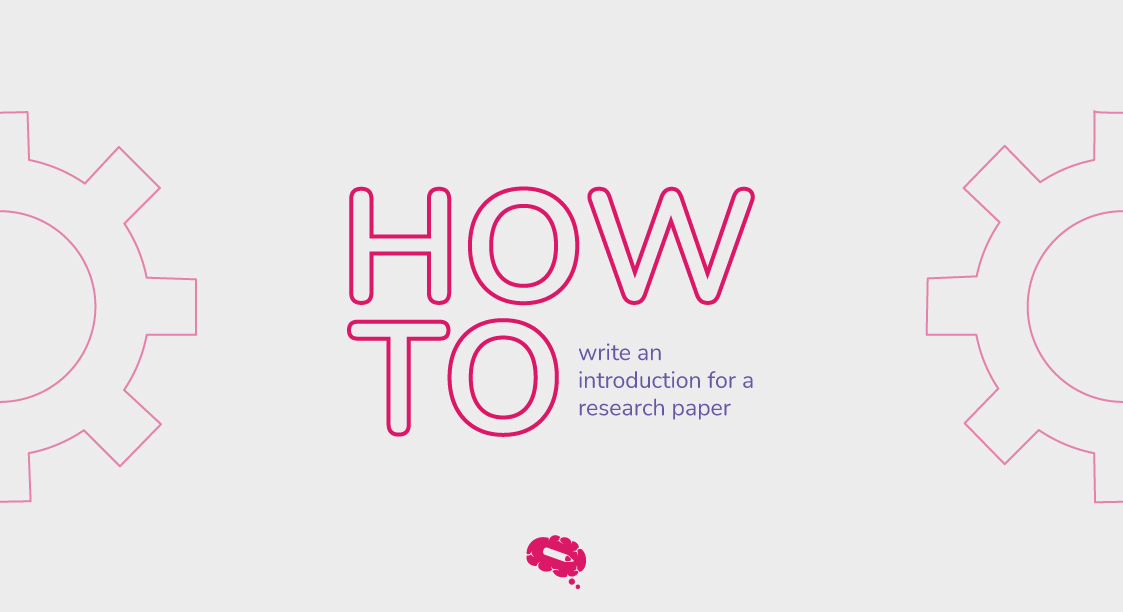The primary means of passing on knowledge to other scientists working on similar or related subjects is to write a research paper. Research papers are a wonderful approach to sharing a unique discovery to a wide or specific audience, who may be interested in repeating the experiments, identifying new applications for the finding, and so on, as well as publicizing your research.
It is crucial to enhance your writing abilities to demonstrate your understanding, apply what you have learned, and get constructive peer evaluation.
A research paper must be well-written to fulfill those objectives. This Mind The Graph article will help you grasp the correct structure.
Main research paper structure
A research paper’s structure is divided into sections and each serves a certain purpose. We’ve listed them below for you to have a better understanding of the importance of each section.
Title
This is the most crucial section of your paper. It is meant to entice the reader and inform them of what you are presenting.
Abstract
Your study is summarized in the abstract. It is almost as crucial as the title since the reader will be capable of skimming through it fast. Most publications’ abstracts may be split into extremely brief sections to help the reader navigate the summary.
Introduction
The introduction fulfills multiple functions. It establishes the context for your research, explains your topic and objectives, and provides a scope of your research. A strong opening sets the tone for the rest of your paper, enticing people to continue reading.
You can learn more about How to write an introduction for a research paper in our recent article.
Material & Methods
Include the names and addresses of the manufacturers as well as a description of the materials utilized in your research paper.
This section explains to the readers what procedures, approaches, designs, and treatments we used in the research, allowing us to recreate the research, understand the linearity between the approach of the objectives and the findings obtained, determine their appropriateness and significance, and provide evidence of any bias in the way the study was intended and conducted.
Results
This section will go over the data that was collected as well as the findings of any statistical tests that were performed as part of your research. It might be accompanied by an explanation of the analysis technique used. If there were several experiments, each one could require its own results section.
Discussion
This is the paper’s final major section, the discussion section often includes a summary of the study’s findings, a description of how those findings address the subject under inquiry and/or the challenges that the research was aimed to solve, and may also elaborate on the significance of those findings. Limitations and future research areas are frequently highlighted in this section.
References
An alphabetical listing of the sources referenced in the paper (by the last name of the first author of each source). Include all references used in the proper citation format; there are other forms presently in use, such as MLA and APA, which, while similar, rely on distinct citation styles that must be followed consistently and methodically.
Tables and figures
Depending on the type of study, tables and/or figures may be included. Each table and figure is presented on a separate page in APA format, and all tables and figures are included after the references. Tables come first, followed by figures. Keep in mind that there are several formats available here as well (APA, MLA, Chicago, and so on).
Appendix
In certain circumstances, extra material that is not necessary for understanding the study report is included in the appendix, such as a list of experiments or details of a secondary analysis.
Writing tips for a research paper structure
- Begin by establishing your research paper structure. A proper skeleton will assist you in writing it more confidently.
- Make the first draft and then improve on it.
- Keep the title clear and engaging; else, the reader will stop reading.
- If you write your abstract section last, it will be better and easier to write.
- The statements in the abstract should be brief and focused. Avoid abbreviations and citations.
- Write for individuals who are unfamiliar with your work and your chosen subject.
- After beginning your discussion section, go back and refine your introduction.
- Check if your research paper follows a logical flow and does not jump from one concept to the next.
- Make sure not to make any final claims in your results section.
- Explain your findings in a logical order and back them up using figures and tables.
- Excessive citations should be avoided. Excessive citations typically mean an extensive list of articles that are completely unrelated to the primary subject of your research paper.
- Always verify format standard guidelines when doing your references section.
- Check twice, three times, four times, as many times as needed.
Exclusive scientific content, created by scientists.
Use the Mind The Graph tool to grab your audience’s attention. Keep in mind that adding visual infographics may boost the authority and give a significant value to your research paper. You may choose from a fair number of templates according to the needs of the science community.

Subscribe to our newsletter
Exclusive high quality content about effective visual
communication in science.




